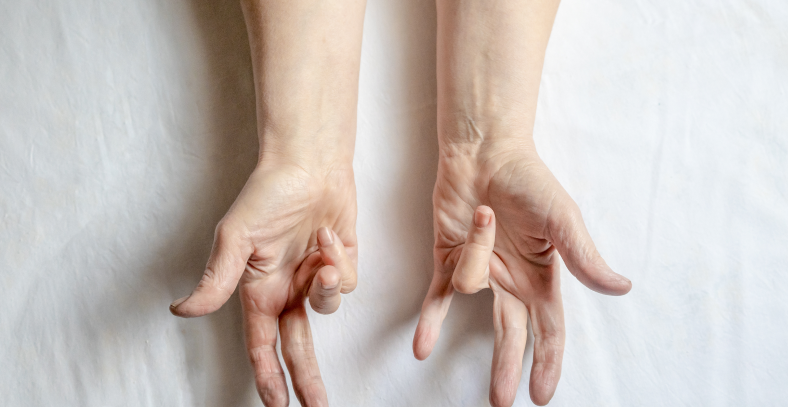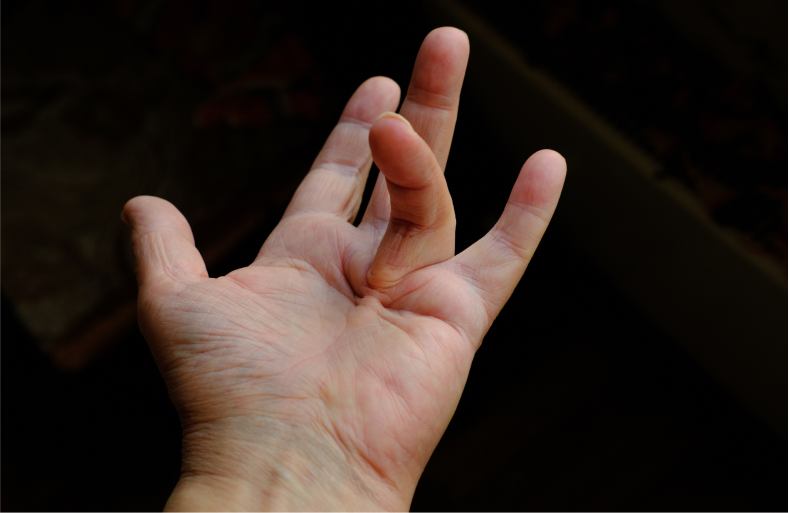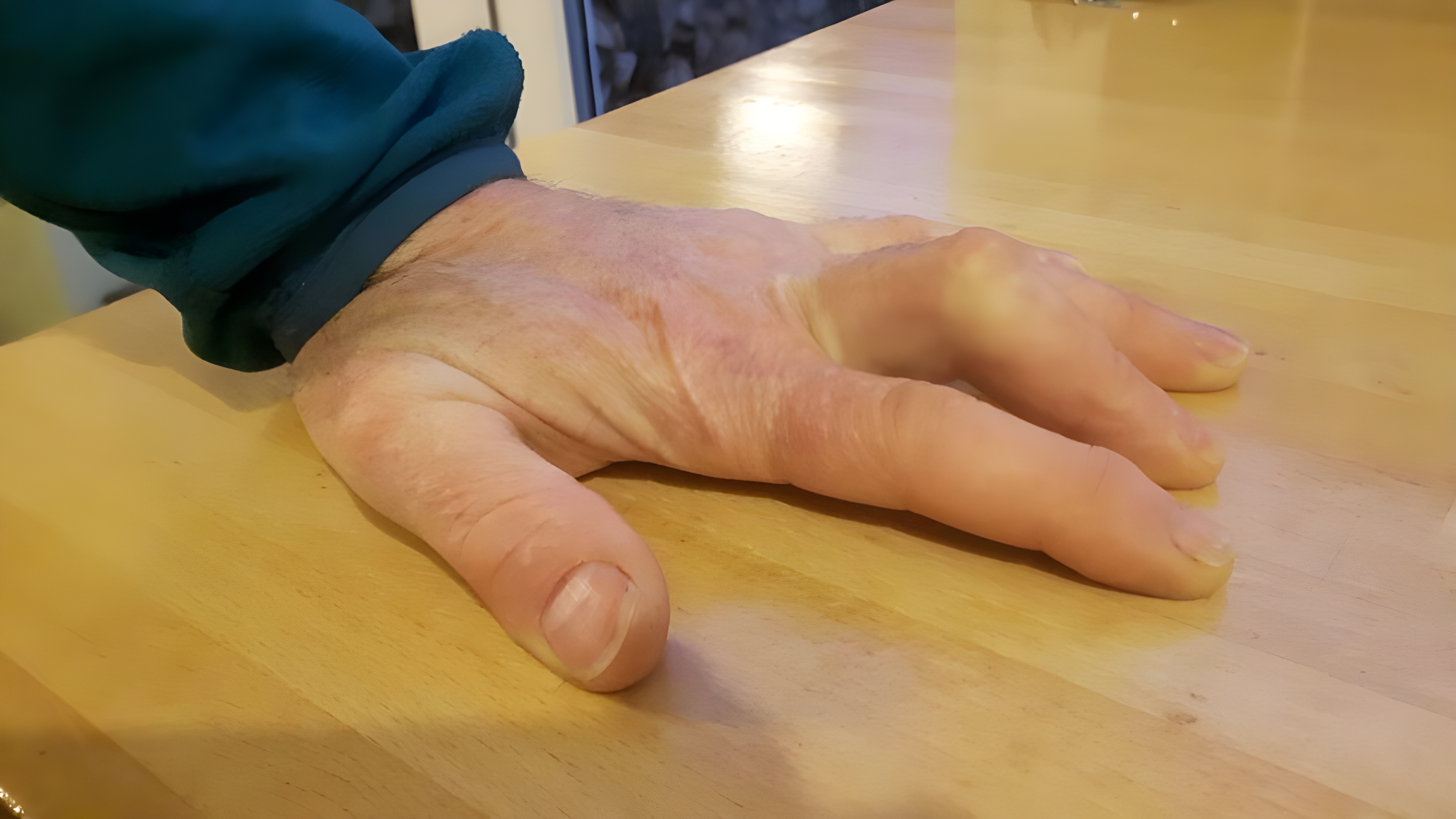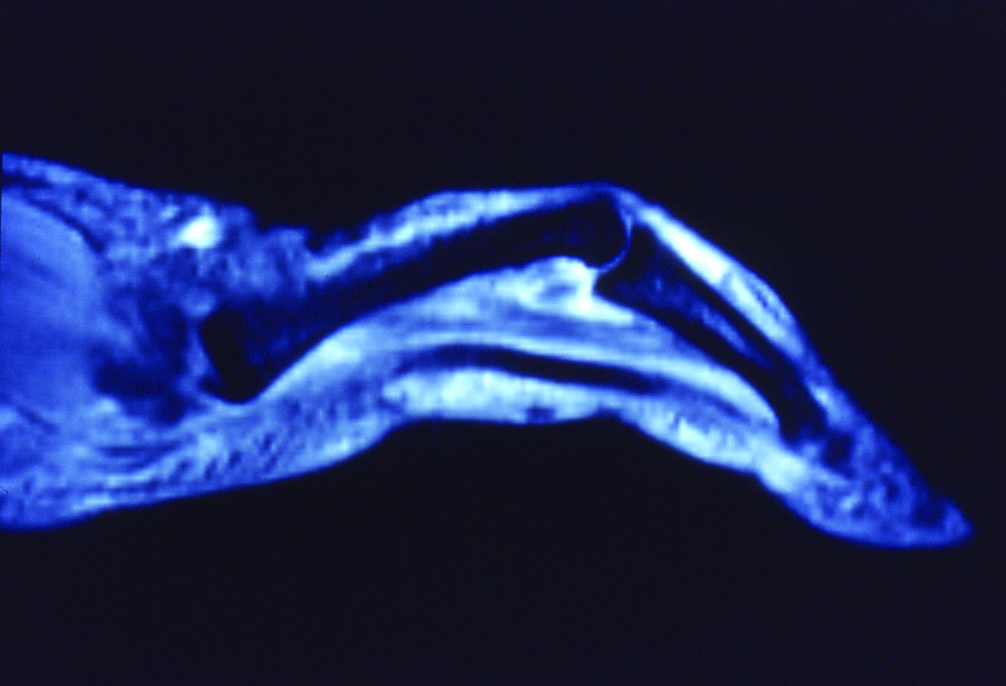Phase -1
So you have a contracture?

Hundreds, if not thousands of people are diagnosed with flexion contractures every year. Maybe it happened slowly over time and you noticed knots under the skin in your palm and a thick cord pulling your fingers into a bent position. Or maybe you had an injury that caused your finger to bend over time. The proximal interphalangeal joint, or PIP, is the middle joint of the finger. All PIP flexion contractures are caused by a force imbalance from either:
- Too much flexion torque, bending the finger
- Not enough extension torque, which should help when straightening or pointing the finger
- Or a combination of the two
Two of the most common causes of contractures are Dupuytren’s disease and trauma.
Dupuytren’s disease causes thickening of the fascia in the palm of your hand, and may develop into a hard lump, thick band, or cord. Over time, it can cause one or more fingers to curl (contract) toward your palm. The ring and little fingers are most commonly affected. In many cases, it affects both hands.
There is not yet a cure and Dupuytren’s disease is likely hereditary, but the exact cause is unknown. It may be linked to cigarette smoking, alcoholism, diabetes, nutritional deficiencies, or medications used to treat seizures. There are many groups providing information and support for patients with Dupuytren’s disease, such as the Dupuytren Research Group https://dupuytrens.org/.
A simple way to see if you may have Dupuytren’s disease is the tabletop test. If you cannot lay your hand flat on a table, and one or more fingers remain bent, you may want to discuss your results with your physician.


Traumatic injury can also cause a contracture that would not pass the tabletop test, but also would not present a thick band on the palm side of the hand.
Extensor and/or flexor tendon injuries, burns, dislocations and fractures can all cause a contracture at the PIP joint.
If you choose to seek treatment, you may want to visit the American Society for Surgery of the Hand (https://www.assh.org/handcare/fahs) to identify surgeons in your area who focus on treatment of the hand.
In this example of a pulley rupture (rock climbers’ injury) a complete rupture of the A2, A3, and A4 pulleys caused the finger to “bowstring” as demonstrated in the photo and X-ray shown here.

Questions For Your Healthcare Provider
What treatment options are available?
Do you know about the Digit Widget?
What information do you want to see?
Please share feedback if you feel we’ve missed something, or if there is specific information you’re looking for. We would love your feedback!
- Any features you feel are missing?
- What additional information are you looking for?
- How would you like to learn more about the Digit Widget?

